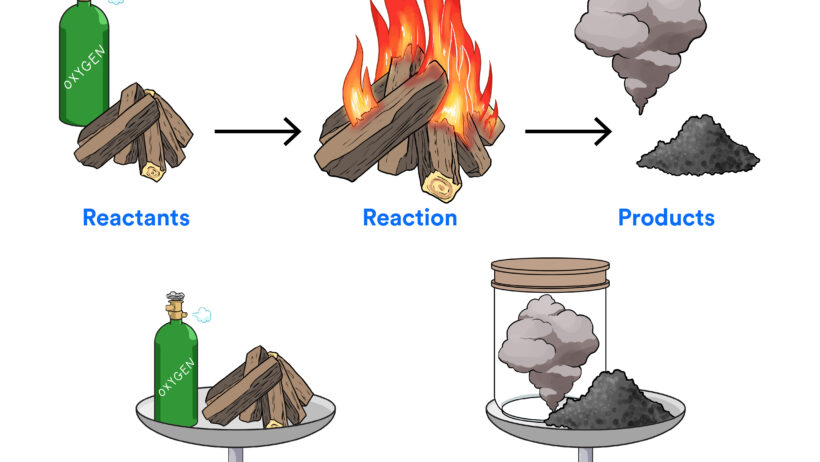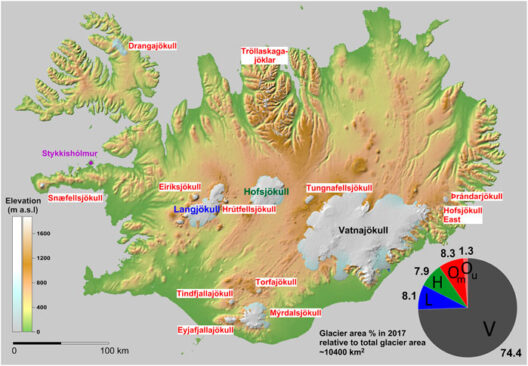The principle of conservation of matter and energy, akin to an ancient ledger that maintains a meticulous account of the universe’s transactions, stands as a cornerstone of scientific understanding. Across various scientific demonstrations, this principle manifests in compelling and visually striking ways, showcasing the intricate ballet between initial conditions and final outcomes. Diving into a few notable demonstrations will illuminate how matter and energy are meticulously conserved, offering a lens through which we can appreciate the seamless interplay between these fundamental entities.
One of the most iconic demonstrations of conservation principles can be found in Jacques Charles’ balloon experiment. Picture a balloon, its vibrant exterior stretching taut with potential energy, laden with air particles that twirl, dance, and collide. Charles observed that as a balloon rises in altitude, absorbing the ambient cold of the upper atmosphere, it expands. This inflation does not signify the creation of new matter, but rather a transformation in energy states. Here, thermal energy transitions into kinetic energy as the cold air outside allows the gas molecules inside to expand. The balloon, therefore, becomes a visual metaphor for energy conservation—an elegant testament to how the sum total of energy within is conserved while its form transitions. This demonstrates the delicate balance maintained within our atmosphere, emphasizing that although the exterior conditions shift, the essence of the balloon’s contents remains unaltered.
Switching gears to a more explosive encounter, consider the demonstration of a fireworks display. Captivating as they are, these pyrotechnics cleverly illustrate the dual concepts of matter and energy conservation. When a firework is ignited, chemical energy harnessed within its components swiftly converts to thermal energy, propelling color and sound into the sky. Yet, despite the magnificent spectacle, the total mass before and after remains constant—elements combine and recombine, but nothing is lost. As the luminous bursts fade into the night, the remnants settle quietly on the ground, a stark reminder that while energy may metamorphose—the dazzling colors of the display morphing into soot and ash—the matter that comprised the firework continues to exist in a new form. This demonstrates that energy, while transformative, follows a rule: it cannot disappear; it merely changes guise, fueling the cycle of creation and decay.
A classic physics experiment demonstrating the conservation of mechanical energy can be exemplified through a simple pendulum. Picture a bob dangling precariously, oscillating back and forth, embodying the energy transformations that play out in this seemingly mundane motion. When the pendulum is lifted to its highest point, gravitational potential energy is at a premium, but as it swings downwards, this potential morphs into kinetic energy, reaching its zenith just before reversing direction. The dance is continuous: at its apex, kinetic energy evaporates, and potential energy swells again. At no point does matter artificially spring into existence or wane; instead, energy oscillates gracefully between forms, an ethereal reminder of the constancy that governs our physical universe.
Furthermore, let us delve into the fascinating world of thermodynamics with the Carnot engine concept. Envision this device—a mechanical symphony—to assist in understanding energy efficiency. The Carnot cycle, through its series of isothermal and adiabatic processes, exemplifies how energy can be transformed from thermal to mechanical while obeying the immutable laws of conservation. Input heat is transformed carefully into work, while the residual heat dissipates, a fugitive energy that escapes, never to be entirely recaptured. Each iteration of this cycle mirrors the rhythm of a natural ecosystem where energy flows through forms and systems, highlighting that nothing truly escapes; instead, energy traverses from one form to another, an elegant reminder of the universe’s intrinsic order.
Lastly, the law of conservation of mass and energy gleefully intertwines in the striking demonstration of nuclear reactions. When atomic nuclei collide at immense velocities, an awe-inspiring conversion occurs, culminating in a massive release of energy, defined by Einstein’s famous equation, E=mc². In these reactions, while atoms may transform, the net energy and matter before and after are steadfastly constant. The fundamental constituents of atoms may disintegrate into lighter elements, yet the total account remains as pristine as an untouched balance sheet at the end of an accounting period. The explosive beauty of this transformation symbolizes a profound truth: in the universe’s vast ledger, matter and energy circulate through a meticulous, ever-constant dance.
In strictly adhering to the laws of conservation, each of these demonstrations reminds us of the exquisite balance within the universe. They unveil a narrative woven into the tapestry of existence—one where energy and matter do not merely vanish or lose their essence, but rather constantly evolve and interact, underscoring a profound interconnectedness that pervades all scientific inquiry. Through these explorations, we glean insights not only about physical phenomena but also about our world, fostering a deeper appreciation for the energy and matter that comprise our existence. In each experiment, from rising balloons to dazzling fireworks and oscillating pendulums, we witness the timeless essence of conservation in action, a captivating and beautifully intricate choreography executed across the stages of science.






